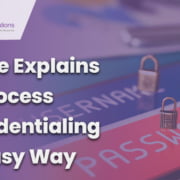Apply These 5 Secret Techniques to Improve Revenue Cycle Management
Practices receive payments for rendered services after weeks, and sometimes it takes months for them to get paid. It doesn’t have to be patients or doctors all the time; when it is time for payment, there is a third stakeholder – the payer – that comes into play.
The US healthcare system is made up of complexities. It is a system in which Medicare and Medicaid programs cover people with disabilities and above the age of 65. Thus, clinicians ought to make their financial cycles a priority. When it is the first thing on your to-do lists, medical claims approve at a much faster rate without having to worry about denials.
Before getting paid in full, providers have to spend time sending the remaining bills to the patients. It is critical to the life of practices to stay profitable and meet their monthly expenses. A much practical way to achieve those goals is to hire Medical billing services such as P3 and amplify the revenue cycle management process.
We bring five secret recipes for your practice to run as seamlessly as the wind itself useful even in times of COVID-19. As America realigns with the after-effects of the pandemic, make use of the following techniques:
Bring medical billing services on board
Due to the disconnect between payments and physicians, going for medical billing outsourcing makes sense. A medical billing company becomes responsible for all their finances and the whole RCM process. Most physicians complain of the slow payment process from patients with High Deductible Health Plans (HDHPs).
To keep it simple and to the point, health IT firms like P3Care work on behalf of providers to get them what they deserve promptly. We believe an efficient billing company is central to the financial freedom of clinicians, for them to have a strong association with their patients, which is the most vital element in healthcare.
Effective financial policymaking
For a patient, getting well is everything. However, before they get well, it is important to understand the cost of care. A financial policy means your practice receives payment before treating the patient. Except for a clinical emergency, if they are unable to pay, reschedule their appointments to another day. Lobbies and waiting areas should have this policy stated on their walls for public awareness. And, if you have a website or social media channels for that practice, pin it to the top of the page. Get the patients to sign it, so their acknowledgment comes in writing.
Spread the word categorically
When someone calls for an appointment, inform them of your financial policy, i.e., collect payments before checking the patient. The automated message that goes out to different patients should include the recorded statement of your financial policy when new patients call in or sending out appointment reminders.
Keep the policy in the loop of communication whether it is at the front desk in the form of a hard copy, through email, or the messenger so there are no surprises.
Calculate upfront costs before checking in
Some tools help practices calculate out-of-pocket costs for the care delivered. They collect data from payer contracts, physician and facility charges, and patient’s health information to calculate upfront costs accurately. We recommend the use of such tools for the sake of financial security. Build self-check-in kiosks in one corner of the waiting area to speed up the care process. They also have an option to accept payments.
Not only do such tools add to the patient experience because of their quick check-ins, but their application speeds up the payment process.
Train front desk staff in insurance programs
When front desk staff is trained in applying for Medicaid and other patient assistance programs, it is an additional skill they can use to motivate the patients. Train staff in scenario-based scripts in which they are face-to-face with a real-time situation before it happens for copayments, cost-sharing charts, and outstanding balances.
Regardless of what the US healthcare seems like, the cost of care is inevitable. Whether we can afford it or not, physicians have the right to earn what they just delivered. Provider medical billing services help you get paid faster and execute a result-oriented revenue cycle management process. For that, we prepare claims according to ICD-10 and CPT coding guidelines by CMS and AMA, respectively as early as the patient leaves the doctor’s office.
















Leave a Reply
Want to join the discussion?Feel free to contribute!